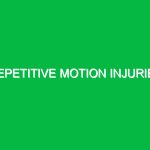Introduction
In the realm of Health, Safety, and Environment (HSE), the techniques of pushing and pulling are not merely practical movements; they embody critical safety practices that can significantly impact workplace safety and efficiency. Understanding the differences between these techniques is vital for minimizing risks and ensuring the well-being of workers. Pushing, which involves exerting force away from the body, is often viewed as safer than pulling, where force is directed towards the body. Yet, both methods come with unique hazards and require careful consideration. This article delves into the nuances of pushing vs. pulling techniques, their associated risks, safety precautions, and the relevant regulations that govern their use.
Defining Pushing and Pulling Techniques
Pushing techniques involve applying force to an object to move it away from oneself. For instance, when a warehouse worker pushes a cart filled with goods to another location, they engage in a pushing technique. Conversely, pulling techniques require workers to draw an object toward their bodies. An example would be pulling a heavy box from a shelf. While both techniques may seem straightforward, the implications for worker safety are profound.
The relevance of these techniques in HSE cannot be overstated. In environments like construction sites, factories, and warehouses, improper use of pushing and pulling can lead to serious injuries. Understanding how to execute these techniques correctly is essential not just for the individual worker but for the overall safety culture within an organization.
Identifying Hazards and Risks Associated with Pushing vs. Pulling Techniques
The hazards associated with pushing and pulling techniques are numerous, and they can lead to various injuries, including musculoskeletal disorders (MSDs), slips, trips, and falls, as well as strains and sprains.
Musculoskeletal Disorders (MSDs)
MSDs are a significant concern in the context of pushing and pulling. When workers use improper techniques or attempt to move loads that are too heavy, they can strain their muscles and ligaments. For example, a study conducted by the National Institute for Occupational Safety and Health (NIOSH) found that the risk of MSDs increases significantly when lifting or moving objects that exceed a worker’s physical capabilities.
Slips, Trips, and Falls
Another common hazard is the potential for slips, trips, and falls. When pushing or pulling objects, workers may not have a clear view of their path. This lack of visibility can lead to accidents, particularly in cluttered or poorly lit environments. For instance, a warehouse employee might not see a loose cable on the floor while pulling a cart, leading to a dangerous fall.
Strains and Sprains
Strains and sprains are prevalent injuries resulting from improper body mechanics while pushing or pulling. Factors such as awkward postures, sudden movements, and repetitive actions contribute to these injuries. For example, a construction worker who pulls heavy materials repeatedly without proper technique may experience a painful back strain.
Safety Precautions and Best Practices Related to Pushing vs. Pulling Techniques
To mitigate the risks associated with pushing and pulling techniques, implementing safety precautions is essential. Here are some actionable best practices:
Assess the Load
Before pushing or pulling an object, always assess its weight and size. If the load is too heavy or unwieldy, seek assistance or use mechanical aids like forklifts or dollies. For instance, a factory worker should never attempt to pull a large machine part alone; instead, they should use a team or appropriate equipment.
Use Correct Posture
Maintaining proper body mechanics is crucial. When pushing, keep your back straight and use your legs to generate force. When pulling, keep the load close to your body and pivot with your feet rather than twisting your torso. A personal anecdote from my time in a manufacturing plant illustrates this point: after implementing training on proper posture, the number of back injuries significantly decreased over the following year.
Clear the Path
Always ensure that the area is free of obstacles before moving objects. This practice not only reduces the risk of slips and falls but also allows for better maneuverability. For example, a logistics coordinator should regularly inspect pathways in a warehouse to ensure they are clear of debris or equipment.
Use Mechanical Aids
Whenever possible, utilize mechanical aids designed to assist in moving heavy objects. Tools such as carts, forklifts, or hoists can significantly reduce the physical strain on workers. In my experience working in a distribution center, we witnessed a notable decline in worker injuries after introducing trolleys for transporting heavy items.
Training and Education
Regular training sessions on proper pushing and pulling techniques can enhance worker awareness and safety. Providing workers with knowledge about the risks and the correct methods to mitigate them fosters a culture of safety. A company I worked with incorporated a safety training program that included hands-on demonstrations, which proved effective in reducing accidents.
Specific Regulations and Standards Governing Pushing vs. Pulling Techniques
Various regulations and standards provide guidance on safe pushing and pulling practices in the workplace.
Occupational Safety and Health Administration (OSHA)
OSHA outlines requirements for employers to ensure safe working conditions. The General Duty Clause mandates that employers provide a workplace free from recognized hazards, including those related to manual handling.
National Institute for Occupational Safety and Health (NIOSH)
NIOSH offers guidelines on safe lifting and manual handling, emphasizing the importance of ergonomic practices. Their lifting equation provides a baseline for evaluating the safety of lifting techniques, which can also be applied to pushing and pulling scenarios.
American National Standards Institute (ANSI)
ANSI develops standards that promote safe practices. The ANSI Z535 series addresses safety signs and colors, which help communicate potential hazards associated with pushing and pulling tasks.
Conclusion
Navigating the complexities of pushing vs. pulling techniques within the HSE domain is essential for ensuring worker safety and minimizing injuries. By understanding the associated risks, implementing best practices, and adhering to regulations, organizations can create a safer environment for their employees. The balance between pushing and pulling techniques may seem simple, but the implications for health and safety are profound. As workplaces continue to evolve, a commitment to education and safety will remain paramount in mitigating the risks associated with these fundamental physical activities.


